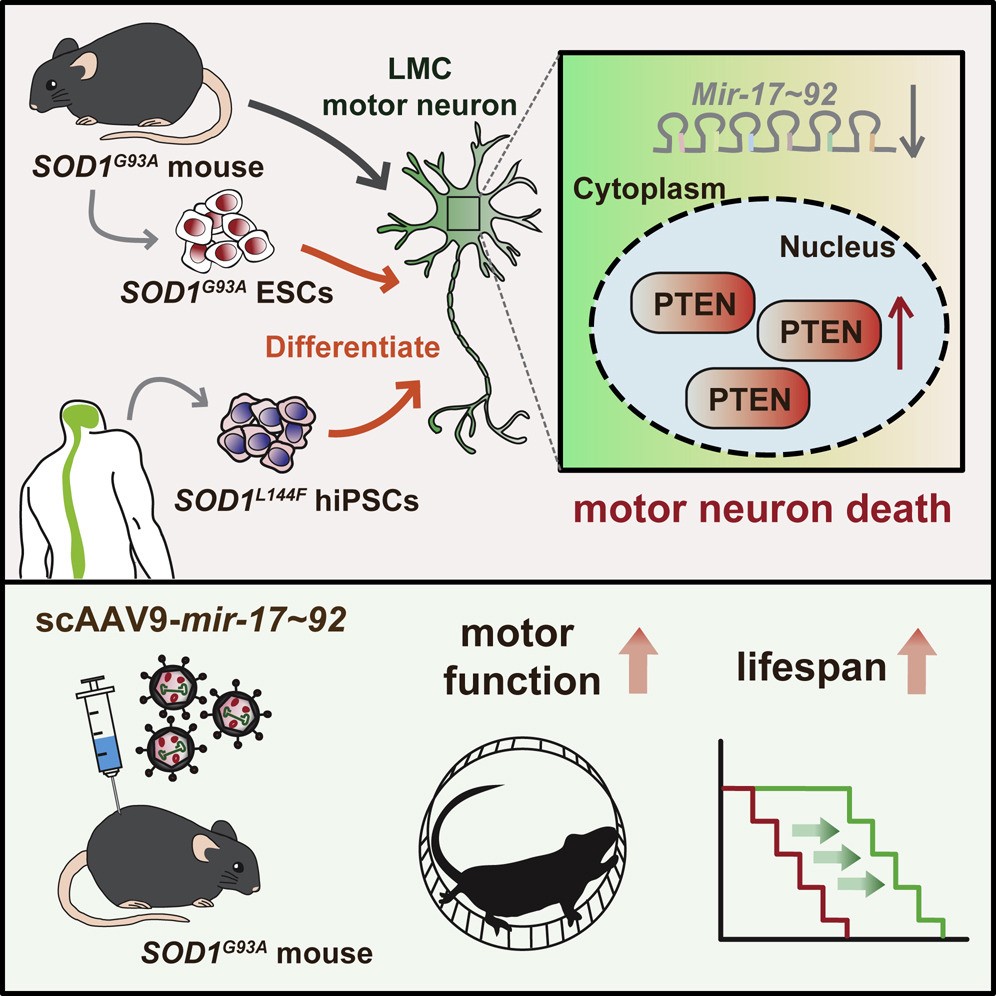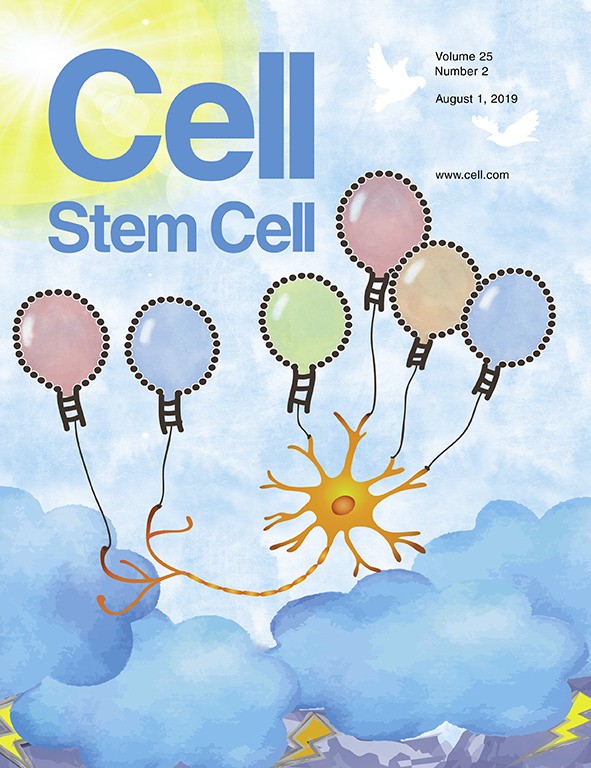Dr. Jun-An Chen uncovered that microRNA might cast new light on ALS treatment

A new discovery has unearthed a group of small regulatory RNAs, known as the mir-17~92 cluster, that protects motor neurons, a cell type that is particularly sensitive to amyotrophic lateral sclerosis (ALS). This discovery could provide new opportunities for designing therapies for this disease. Dr. Chen’s team was able to restore mir-17~92 levels in human and mouse ALS motor neurons by a genetic approach or via virus-mediated gene therapy. Excitingly, abnormal nuclear PTEN levels were reversed and motor neuron numbers recovered to normal levels using these approaches. Furthermore, motor deficits and lifespans of adult ALS mice were remarkably improved after single treatment with virus-delivered mir-17~92. Given that global miRNA dysregulation has been observed in motor neurons from different types of ALS patients, we are optimistic that mir-17~92 gene therapy can also be applied to diverse ALS types.

Progressive degeneration of motor neurons (MNs) is the hallmark of amyotrophic lateral sclerosis (ALS). In this issue, Tung and Peng et al. found that a microRNA cluster, namely mir-17~92, could confer the vulnerability of limb-innervating MNs to ALS. Overexpression of mir-17~92 significantly improves motor deficits and survival in an SOD1-linked ALS mouse model. The illustration depicts that a degenerating motor neuron is elevated by balloons made of the 6 members of microRNAs in the mir-17~92 cluster (four colors mirrors four seed family members of microRNAs) from the storm to the sunny sky, casting the rescue of motor neuron degeneration by microRNAs. Cover artwork by Ya-Yin Tsai.